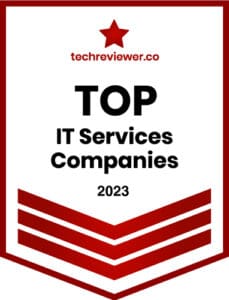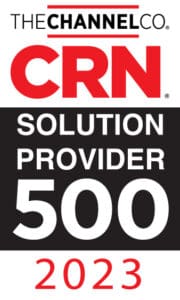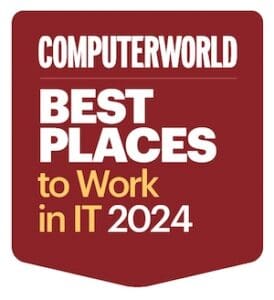In 2020, Cloud Security Alliance reported that 69% of enterprises have moved or are moving mission-critical information to the cloud. Companies are shifting away from an on-premises mentality, hoping to reduce their total cost of ownership and free themselves from server management. This trend will continue in the near term. However, as sensitive data becomes controlled by 3rd party vendors, what risks do organizations face? Will a security risk assessment provide the necessary strategies for your safe and proper cloud migration?
What Is the Cloud?
The “cloud” is a buzzword on every large organization’s technology bingo card. It sounds like an alluring concept, but the truth is anti-climactic. The cloud is a network of data farms offering remote data storage and services via the internet. In common terms, the cloud is just somebody else’s computer. Organizations are swapping their own hardware and internal resources for cloud computing and automated services to streamline expenses and allow their internal teams to focus on higher priority tasks.
Why Is Cloud so Popular?
The recent pandemic created turmoil for Information Technology (IT) departments. With many IT folks forced to work from home and not be available in person to manage their physical servers, issues with data security and data access were exposed. Outages had to be fixed offsite which created havoc when equipment failure was the cause.
In addition, many cloud services promise streamlined costs for IT departments. Internal resources can leave behind mundane server management tasks and be reallocated to more important projects. The act of server, data and security management are becoming less specialized skills, thereby reducing these expenses across the world. And the world of cloud has become advanced in more ways than one, providing highly scalable, highly secure environments at pennies on the dollar in some cases.
Why Is Security in the Cloud Perceived to Be an Issue?
Moving sensitive data to third-party control has created concern, and rightfully so. You are moving from full control to partial control, and trusting someone else to safeguard one of your most precious assets, data. However, as the cloud has become more popular, this mentality is now becoming antiquated. It’s been proven that paying someone else who specializes in cybersecurity is actually safer for your organization versus trusting your internal teams, who may not be specialized or may have outdated experience.
In addition, the computers that IT manages are comprised of a mixture of technologies from different eras. Some were created when cybercrime was less of a threat and systems were not as easily accessible as they are today. These old technologies create potential loopholes that hackers can exploit. In addition, they may have reactive defense networks when modern systems need to be proactive.
How Can a Security Risk Assessment Help?
The goal of a security risk audit is to review and analyze your organization’s security and related processes. This is usually conducted at the start of any new project that impacts the current network, systems, and data. This audit may include assessing the following:
- System security controls
- Physical access controls
- Network infrastructure design
- Network perimeter protection
- Anti-malware strategies
- Anti-virus software
- Protocols and procedures
- Security management and governance
The outcome of a properly completed assessment is documentation outlining any uncovered security gaps. Management can then address the security gaps or decide not to proceed with the project. These types of audits are becoming a necessary step as systems, and especially cloud systems, continue to evolve and incorporate modern technologies.
How Can You Prevent Cloud Security Breaches?
It seems like data breaches are becoming a regular news event. Even Fortune 50 companies who have kept their systems on-premises are being attacked. Due to the millions and billions of dollars lost from these security breaches, many companies have adopted a “cloud-first” mentality, and are planning migrations to the cloud in the near term.
Reducing your exposure to cybercriminals is one of the best ways to achieve a strong security strategy. According to Gartner, nearly 95 percent of cloud data breaches are due to weak organizational protocols. Creating an effective strategy starts from the top by strongly promoting a culture of security and enforcing strict password methods. According to Verizon’s Data Breach Investigation Report, 80% of data breaches can be attributed to weak, recycled, or otherwise compromised passwords.
Staying up-to-date on password security developments can keep you one step ahead of hackers. Keeping antivirus protections up to date will also reduce the potential attacks. Ensuring that firewalls are used, leveraging an intrusion detection system, and implementing a vulnerability management tool can all also reduce risk and expose weaknesses. The cybersecurity horizon is constantly shifting, so this is a never-ending game. It’s important to keep up.
How Do You Select the Right Cloud Partner?
As the digital transformation age proliferates at a rapid pace, organizations are looking for cloud vendors to assist them efficiently, and with as little business disruption as possible. Organizations are most successful in approving cloud projects when the stakeholders clearly outline key objectives and communicate the benefits. The next critical step is partnering with a could vendor with your best interests at heart.
One of the mistakes organizations make is selecting a variety of cloud vendors. Instead, invest in a single vendor who can execute well and create a long-lasting relationship. Making the move from on-premises to the cloud requires a lot of transformation. This migration is not a one-size-fits-all process. The staff has to adapt to new systems and security paradigms. This is where the vendor can make or break the success of a cloud project.
The first thing step is to understand the specific needs of your business. You can consider this step your intelligence gathering stage. How much information are you moving? Who has access to the data? Will you need to accommodate for potential business growth? When you can understand what your needs are, you can be in a better place to make actionable decisions about your migration process.
Take our Cloud Computing Readiness Assessment to find out what cloud computing services are the right fit for you.
Looking for a trusted cloud partner? Visit Edafio Technology Partners today to begin your new cloud journey. We’re one of the top managed service providers (MSP), and we’re UCS/SOC 2 Type 2 certified. We’re committed to partnering with you every step of the way.








